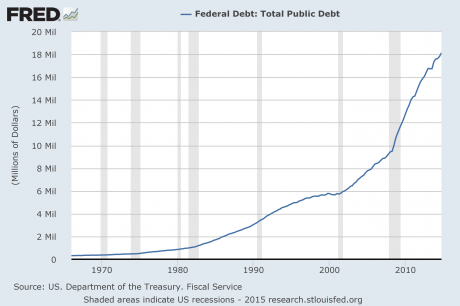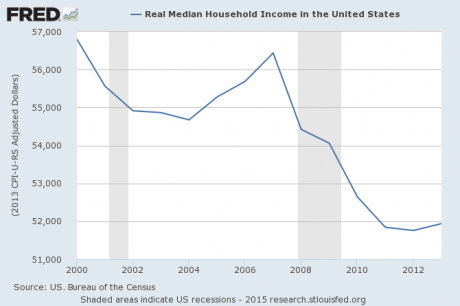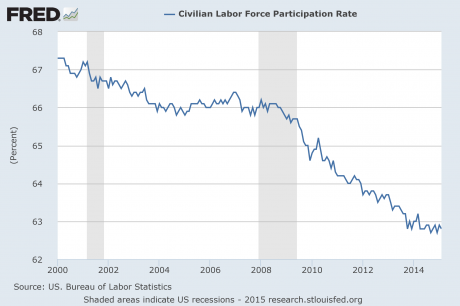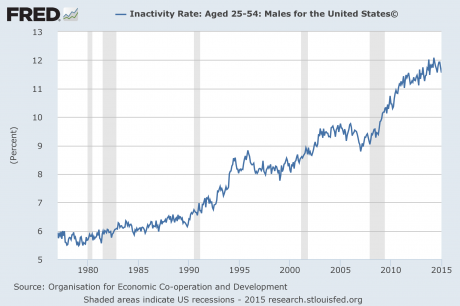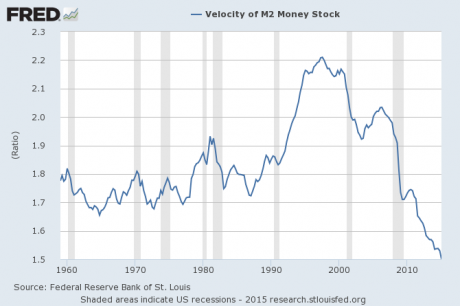Wednesday, July 29, 2015
Tuesday, July 28, 2015
Blue Solar Water Heals the Body and Spirit: Here Is How To Make It
Tuesday, July 28, 2015 3:54
Blue Solar Water is easy to make, delicious to drink and is very a powerful to be used for body healing.
As we know, water carries vibrations, energy frequency, crystals, colors… Blue solar water provides the best: the powerful energy of the sun, the source of all life, and the fascinating properties of the healing and calming blue color. This water has become a favorite and popular after the book Zero Limits by Dr. Hew Len and above all through Ho’oponopono, an ancient Hawaiian healing technique.
In addition to being extremely healthy, this water helps cleanse the deep negative subconscious programs that we automatically repeat over and over again. Blue solar water heals emotional wounds and blockages, takes them to the surface and relieves us from them so that we get reset back to zero, in a pure state, to a clean start, without the background noise of negative thoughts. This water meets positivity, peace and love. And everyone can drink it, children, sick with cancer, especially those on chemotherapy. It is even tastier than plain water. And it is very easy to make.
Why blue?
Blue is the color of the fifth chakra, the so-called power center or the throat chakra (Vishuddha). The throat chakra is extremely important because it is the way through which energy from the higher energy centers can move to the lower ones and vice versa. It is the first center of higher frequencies and only when it is completely clean and open, we can reach higher states of consciousness. It is a bridge between the physical and the spiritual world, between the heart and the mind. It separates the secular from the sacred and transmitters the intention of the soul.
And it has been scientifically proven that the color blue has a tremendously powerful impact on our brains, decision-making and behavior.
Blue sky means a nice, relaxing day. Clean calm blue sea means calmness and serenity. In fact, everything blue symbolizes trust, loyalty, wisdom, confidence, intelligence, faith, truth, and heaven. Krishna is blue.
Science says it’s no coincidence these blue things make all of us us feel so good. After all, blue is the only color spectrum that can effectively prevent people from committing suicide.
It is proven that the color blue has a calming effect on people, and that is why it is used in different ways. In 2000, police in Glasgow, Scotland, installed blue lights in areas with a high crime rate. Since then, crime in those infamous neighborhoods decreased by 9%.
In Japan, several major railway companies switched to only blue lights at all railway crossings. To date they have a stunning success: In 2007, a year before the blue lights were installed, they had 640 suicides. In 2008, after the lights were installed, there were zero suicides!
If this is all strange and you do not believe in the incredible efficiency of blue, read on.
One theory says that the color itself has a tangible, biological effect on our brain chemistry. Harold Wohlfarth, president of the German Academy of Color Science, conducted a study in which he found that blue color lighting actually had a psychological impact on children and adults, and what is particularly bizarre in all things is the fact that it had the same effect even on blind people.
Wohlfarth believes that traces of electromagnetic energy from the blue light affects certain neurotransmitters in the brain. When light of a certain color falls on the eye, even if the eye is blind, it affects the gland that produces melatonin, which creates a chain reaction that elevates mood and calms emotions.
How to make Blue solar water?
All you need is a blue glass bottle (the shade of blue is not important) and fill it up with filtered, spring or plain tap water. You also need to make sure that the cap you seal the bottle with is not made of metal. It can be glass or plastic, but never use metal. The cap only serves as a protection against dust or insects that are very fond of this water.
This water bottle should be then kept on the sun for 1-12 hours. The longer you keep it on the sun, the sweeter its taste will get. But remember not to keep it longer than 12 hours.
How to drink it?
Drink this water as much as possible, it is very tasty and drinkable. Somehow, our body recognizes it, so even those who don’t drink so much water will have no problem drinking a few liters.
In addition to drinking it, you can use this water for cooking, watering flowers, for your animals, add it in the washing machine, dishwasher, put in a sprayer and refresh the rooms, add it to your bath…
Once you have made your Blue Solar Water you can transfer it into another container, plastic or glass, doesn’t matter. It can be kept in the refrigerator or at room temperature.
Thursday, July 23, 2015
12 Ways The Economy Is In Worse Shape Now Than During The Depths Of The Last Recession
Did you know that the percentage of children in the United States that are living in poverty is actually significantly higher than it was back in 2008? When I write about an “economic collapse”, most people think of a collapse of the financial markets. And without a doubt, one is coming very shortly, but let us not neglect the long-term economic collapse that is already happening all around us. In this article, I am going to share with you a bunch of charts and statistics that show that economic conditions are already substantially worse than they were during the last financial crisis in a whole bunch of different ways. Unfortunately, in our 48 hour news cycle world, a slow and steady decline does not produce many “sexy headlines”. Those of us that are news junkies (myself included) are always looking for things that will shock us. But if you stand back and take a broader view of things, what has been happening to the U.S. economy truly is quite shocking. The following are 12 ways that the U.S. economy is already in worse shape than it was during the depths of the last recession…
#1 Back in 2008, 18 percent of all Americans kids were living in poverty. This week, we learned that number has now risen to 22 percent…
There are nearly three million more children living in poverty today than during the recession, shocking new figures have revealed.Nearly a quarter of youngsters in the US (22 percent) or around 16.1 million individuals, were classed as living below the poverty line in 2013.This has soared from just 18 percent in 2008 – during the height of the economic crisis, the Casey Foundation’s 2015 Kids Count Data Book reported.
#2 In early 2008, the homeownership rate in the U.S. was hovering around 68 percent. Today, it has plunged below 64 percent. Incredibly, it has not been this low in more than 20 years. Just look at this chart – the homeownership rate has continued to plummet throughout Obama’s “economic recovery”…
#3 While Barack Obama has been in the White House, government dependence has skyrocketed to levels that we have never seen before. In 2008, the federal government was spending about 37 billion dollars a year on the federal food stamp program. Today, that number is above 74 billion dollars. If the economy truly is “recovering”, why is government dependence so much higher than it was during the last recession?
#4 On the chart below, you can see that the U.S. national debt was sitting at about 9 trillion dollars when we entered the last recession. Since that time, the debt of the federal government has doubled. We are on the exact same path that Greece has gone down, and what you are looking at below is a recipe for national economic suicide…
#5 During Obama’s “recovery”, real median household income has actually gone down quite a bit. Just prior to the last recession, it was above $54,000 per year, but now it has dropped to about $52,000 per year…
#6 Even though our incomes are stagnating, the cost of living just continues to rise steadily. This is especially true of basic things that we all purchase such as food. As I wrote about earlier this year, the price of ground beef in the United States has doubled since the last recession.
#7 In a healthy economy, lots of new businesses are opening and not that many are being forced to shut down. But for each of the past six years, more businesses have closed in the United States than have opened. Prior to 2008, this had never happened before in all of U.S. history.
#8 Barack Obama is constantly telling us about how unemployment is “going down”, but the truth is that the percentage of working age Americans that are either working or considered to be looking for work has steadily declined since the end of the last recession…
#9 Some have suggested that the decline in the labor force participation rate is due to large numbers of older people retiring. But the reality of the matter is that we have seen a spike in the inactivity rate for Americans in their prime working years. As you can see below, the percentage of males between the ages of 25 and 54 that aren’t working and that aren’t looking for work has surged to record highs since the end of the last recession…
#10 A big reason why we don’t have enough jobs for everyone is the fact that millions upon millions of good paying jobs have been shipped overseas. At the end of Barack Obama’s first year in office, our yearly trade deficit with China was 226 billion dollars. Last year, it was more than 343 billion dollars.
#11 Thanks to all of these factors, the middle class in America is dying. In 2008, 53 percent of all Americans considered themselves to be “middle class”. But by 2014, only 44 percent of all Americans still considered themselves to be “middle class”.
When you take a look at our young people, the numbers become even more pronounced. In 2008, 25 percent of all Americans in the 18 to 29-year-old age bracket considered themselves to be “lower class”. But in 2014, an astounding 49 percent of all Americans in that age range considered themselves to be “lower class”.
#12 This is something that I have covered before, but it bears repeating. The velocity of money is a very important indicator of the health of an economy. When an economy is functioning smoothly, people generally feel quite good about things and money flows freely through the system. I buy something from you, then you take that money and buy something from someone else, etc. But when an economy is in trouble, the velocity of money tends to go down. As you can see on the chart below, a drop in the velocity of money has been associated with every single recession since 1960. So why has the velocity of money continued to plummet since the end of the last recession?…
If you are waiting for an “economic collapse” to happen, you can stop waiting.
One is unfolding right now before our very eyes.
But what most people really mean when they ask about these things is that they are wondering when the next great financial crisis will happen. And as I discussedyesterday, things are lining up in textbook fashion for one to happen in our very near future.
Once the next great financial crisis does strike, all of the numbers that I just discussed above are going to get a whole lot worse.
So as bad as things are now, the truth is that this is just the beginning of the pain.
Wednesday, July 15, 2015
We Are In FAR Worse Shape Than We Were Just Prior To The Last Great Financial Crisis
- None of the problems that caused the last financial crisis have been fixed. In fact, they have all gotten worse. The total amount of debt in the world has grown by more than 40 percent since 2007, the too big to fail banks have gotten 37 percent larger, and the colossal derivatives bubble has spiraled so far out of control that the only thing left to do is to watch the spectacular crash landing that is inevitably coming. Unfortunately, most people do not know the information that I am about to share with you in this article. Most people just assume that the politicians and the central banks have fixed the issues that caused the last great financial crisis. But the truth is that we are in far worse shape than we were back then. When this financial bubble finally bursts, the devastation that we will witness is likely to be absolutely catastrophic.
- Too Much Debt
- One of the biggest financial problems that the world is facing is that there is simply way too much debt. Never before in world history has there ever been a debt binge anything like this.
- You would have thought that we would have learned our lesson from 2008 and would have started to reduce debt levels.
- Instead, we pushed the accelerator to the floor.
- It is hard to believe that this could possibly be true, but according to the Bank for International Settlements the total amount of debt in the world has increased by more than 40 percent since 2007…
The amount of debt globally has soared more than 40 percent to $100 trillion since the first signs of the financial crisis as governments borrowed to pull their economies out of recession and companies took advantage of record low interest rates, according to the Bank for International Settlements.The $30 trillion increase from $70 trillion between mid-2007 and mid-2013 compares with a $3.86 trillion decline in the value of equities to $53.8 trillion in the same period, according to data compiled by Bloomberg. The jump in debt as measured by the Basel, Switzerland-based BIS in its quarterly review is almost twice the U.S.’s gross domestic product.
- That is a recipe for utter disaster, and yet we can’t seem to help ourselves.
- And of course the U.S. government is the largest offender.
- Back in September 2008, the U.S. national debt was sitting at a total of 10.02 trillion dollars.
- As I write this, it is now sitting at a total of 17.49 trillion dollars.
- Is there anyone out there that can possibly conceive of a way that this ends other than badly?
- Too Big To Fail Is Now Bigger Than Ever
- During the last great financial crisis we were also told that one of our biggest problems was the fact that we had banks that were “too big to fail”.
- Well, guess what?
- Those banks are now much larger than they were back then. In fact, the six largest banks in the United States (JPMorgan Chase, Bank of America, Citigroup, Wells Fargo, Goldman Sachs and Morgan Stanley) have collectively gotten 37 percent larger since the last financial crisis.
- Meanwhile, 1,400 smaller banks have gone out of business during that time frame, and only one new bank has been started in the United States in the last three years.
- So the problem of “too big to fail” is now much worse than it was back in 2008.
- The following are some more statistics about our “too big to fail” problem that come from a previous article…
- -The U.S. banking system has 14.4 trillion dollars in total assets. The six largest banks now account for 67 percent of those assets and all of the other banks account for only 33 percent of those assets.
- -Approximately 1,400 smaller banks have disappeared over the past five years.
- -JPMorgan Chase is roughly the size of the entire British economy.
- -The four largest banks have more than a million employees combined.
- -The five largest banks account for 42 percent of all loans in the United States.
- -Bank of America accounts for about a third of all business loans all by itself.
- -Wells Fargo accounts for about one quarter of all mortgage loans all by itself.
- -About 12 percent of all cash in the United States is held in the vaults of JPMorgan Chase.
- The Derivatives Bubble
- Most people simply do not understand that over the past couple of decades Wall Street has been transformed into the largest and wildest casino on the entire planet.
- Nobody knows for sure how large the global derivatives bubble is at this point, because derivatives trading is lightly regulated compared to other types of trading. But everyone agrees that it is absolutely massive. Estimates range from $600 trillion to $1.5 quadrillion.
- And what we do know is that four of the too big to fail banks each have total exposure to derivatives that is in excess of $40 trillion.
- The numbers posted below may look similar to numbers that I have included in articles in the past, but for this article I have updated them with the very latest numbers from the U.S. government. Since the last time that I wrote about this, these numbers have gotten even worse…
- JPMorgan Chase
- Total Assets: $1,989,875,000,000 (nearly 2 trillion dollars)
- Total Exposure To Derivatives: $71,810,058,000,000 (more than 71 trillion dollars)
- Citibank
- Total Assets: $1,344,751,000,000 (a bit more than 1.3 trillion dollars)
- Total Exposure To Derivatives: $62,963,116,000,000 (more than 62 trillion dollars)
- Bank Of America
- Total Assets: $1,438,859,000,000 (a bit more than 1.4 trillion dollars)
- Total Exposure To Derivatives: $41,386,713,000,000 (more than 41 trillion dollars)
- Goldman Sachs
- Total Assets: $111,117,000,000 (just a shade over 111 billion dollars – yes, you read that correctly)
- Total Exposure To Derivatives: $47,467,154,000,000 (more than 47 trillion dollars)
- During the coming derivatives crisis, several of those banks could fail simultaneously.
- If that happened, it would be an understatement to say that we would be facing an “economic collapse”.
- Credit would totally freeze up, nobody would be able to get loans, and economic activity would grind to a standstill.
- It is absolutely inexcusable how reckless these big banks have been.
- Just look at those numbers for Goldman Sachs again.
- Goldman Sachs has total assets worth approximately 111 billion dollars (billion with a little “b”), but they have more than 47 trillion dollars of total exposure to derivatives.
- That means that the total exposure that Goldman Sachs has to derivatives contracts is more than 427 times greater than their total assets.
- I don’t know why more people aren’t writing about this.
- This is utter insanity.
- During the next great financial crisis, it is very likely that the rest of the planet is going to lose faith in the current global financial system that is based on the U.S. dollar and on U.S. debt.
- When that day arrives, and the U.S. dollar loses reserve currency status, the shift in our standard of living is going to be dramatic. Just consider what Marin Katusa of Casey Research had to say the other day…
It will be shocking for the average American… if the petro dollar dies and the U.S. loses its reserve currency status in the world there will be no middle class.The middle class and the low class… wow… what a game changer. Your cost of living will quadruple.
- The debt-fueled prosperity that we are enjoying now will not last forever. A day of reckoning is fast approaching, and most Americans will not be able to handle the very difficult adjustments that they will be forced to make. Here is some more from Marin Katusa…
Imagine this… take a country like Croatia… the average worker with a university degree makes about 1200 Euros a month. He spends a third of that, after tax, on keeping his house warm and filling up his gas tank to get to work and get back from work.In North America, we don’t make $1200 a month, and we don’t spend a third of our paycheck on keeping our house warm and driving to work… so, the cost of living… food will triple… heat, electricity, everything subsidized by the government will triple overnight… and it will only get worse even if you can get the services.
- All of this could have been prevented if we had done things the right way.
- Unfortunately, we didn’t learn any of the lessons that we should have learned from the last financial crisis, and our politicians and the central banks have just continued to do the same things that they have always done.
- So now we all get to pay the price.
Gold And The Silver Stand-Off: Is The Selling Of Paper Gold And Silver Finally Ending?
Submitted by Paul Mylchreest of ADM Investor Services Intl. (pdf version)
Gold and the Silver stand-off: Demarketing and Deep Value
The demarketing (in the 1971 Harvard Business Review, Kotler and Levy defined demarketing as “discouraging customers in general or a certain class of customers in particular on either a temporary or a permanent basis.” This is normally done when there is a shortage of supply or desire to promote other products) of gold may be close to running its course as it seems that sellers of paper gold instruments are attempting to induce one more sell-off to fully cover their diminishing short positions. Indeed, signs are emerging that the long Nikkei/short gold trade, which has done so much damage to gold’s price, is becoming problematic.
This could be due to one or more of: less desire to run large paper short positions by some banks/funds; rising cost of repo funding; larger bids emerging for physical bullion below $1,200/oz; and/or a view that the BoJ is reluctant to engage in ever greater stimulus. The gold basis and four major identifiable sources of gold demand (Shanghai Gold Exchange withdrawals, Indian imports, net ETF changes and net central bank changes) are indicating strong physical demand right now.
Anomalies in the silver market, such as large positive divergences in open interest and ETF holdings versus gold, suggest that entities which have been shorting gold may have been hedging (at least partly) in silver. What appears to be a stand-off in this much smaller market means that enormous volatility in the silver price is probably inevitable, especially with physical supply drying up.
It could be argued that a deep value case for gold, silver and related equities is becoming more and more apparent. For example gold, the HUI (NYSE Gold Bugs Index) and the GDXJ (Junior Gold Miners ETF) have underperformed the S&P 500 by 66%, 87% and 91%, respectively, since their peaks.
The gold price is still performing poorly in US dollars.
That said, it is close to being in a bull market in Yen, now 18.2% above its 2013 low…
…which says something about gold’s value (even in today’s seriously flawed gold market) in the face of a currency which has been deliberately and cynically debased by the BoJ (QQE running at 17% p.a. of GDP).
Price discovery in the gold and silver markets remains misunderstood by an overwhelming majority of financial market participants. It was been hijacked by two factors.
- The extreme domination of “paper gold” trading vis-à-vis a comparatively tiny amount of physical bullion; and
- Gold has been on the “wrong” side of a long/short trade since about September 2012.
In a January 2013 report “Report of the Working Group to Study the Issues Related to Gold Imports and Gold Loans by NBFCs”, the Reserve Bank of India estimated that the ratio of paper gold trading to physical gold trading is 92:1. That is a lot of unbacked paper gold instruments.
This has almost entirely separated the “gold price”, such as it is (the clearing price for vast volumes of paper gold “representations” with a fractional backing) from the fundamental supply and demand dynamics for actual physical gold bullion.
As Mr L. famously quipped.
“Ever get the feeling you’ve been cheated?“
Using the net short position of the Commercials (mainly banks) on the COMEX as a proxy for paper gold supply, the chart below shows how on the three occasions during 2006-11 that more paper gold was NOT 6supplied into a rising gold market, the gold price went parabolic.
In terms of the long/short trade, we outlined a thesis in late-2014 which drew together a complex web of interactions between the gold price, Japan’s Nikkei index, repo financing, BoJ policy meetings and anomalies in the silver market.
In brief, our thesis was as follows.
The interactions began forming in late-2012, specifically around September, which was a pivotal period in recent financial history, when central banks (notably the Fed and BoJ) embarked on a new phase of aggressive credit creation.
We believe that at the centre of these interactions is a large, leveraged long/short trade which we think is long the Nikkei index and short paper gold. The more the Nikkei rose, the more the gold price was pushed down and, in many cases, major price moves in both were closely tied to BoJ policy meetings, especially announcements of (even) more aggressive monetary policy under “Abenomics”.
We began to suspect that gold might be the short in a long/short trade when we noticed a reasonably close correlation between gold and interest rates in the repo market. In particular, the gold price tended to decline with the cost of repo funding. The repo market is a major part of the “shadow banking” sector and is the nexus for investment strategies involving leverage and short selling.
Controlling the short gold/long Nikkei trade may have become more problematic in recent months. For example, repo rates have been on the rise since late-2014. As funding costs increased, the downward pressure on gold has eased somewhat— they may be related.
Suspecting that gold was the short in a long/short trade is one thing, finding the corresponding long was another. When we first looked at the charts of gold and the Nikkei, there was nothing to see…
…until we inverted the Nikkei axis. Now can you see it?
Then the almost perfect correlation between the two was visible from September 2012 until the beginning of 2015.
And one that wasn’t there beforehand…either in the previous year (see chart below) or earlier.
As we’ve said before, the long/short could be Yen/gold, rather than Nikkei/gold, although the correlation is not quite as good.
Since late-2014, the gold price has traded sideways while the Nikkei continued to rise. We can only speculate on why this is, but four possible explanations come to mind.
- The rising cost of repo funding; and/or
- Solid bids emerging for physical bullion, around US$1,200/oz and below; and/or
- A decreasing desire to maintain large short positions by some of the Commercials (banks); and/or
- A view that the BoJ is reluctant to implement even more monetary stimulus with QQE already running at an annualised rate of 17% of GDP – although we wouldn’t rule it out given the lunacy demonstrated so far.
Before the renewed gold sell-off in recent days, gold volatility had fallen to a level which was close to a 10-year low.
Gold was/still is due for a significant price move, one way or another. In a free market, this would most likely be up since the Greek crisis led to reports of a strong pick-up in demand from bullion dealers. For example, Torgny Persson, CEO of BullionStar, noted.
“Precious metals demand in the last week leading up to the Greek referendum has been about 150 % higher than normal both in terms of order quantity and order volume…Based on my conversations with the western world’s leading refineries and precious metals wholesalers, they have experienced similar increases in the last week.”
In contrast, Bitcoin, a perceived “gold substitute”, safe haven (maybe) with finite supply (although lacking any kind of “tangible” value and track record down the millennia, has performed much better.
However, a surging gold price is the last thing that anybody who’s concerned with maintaining the veneer of financial stability wants to see.
We suspect that the Commercials are hoping that a renewed bout of weakness will attract additional shorting by the Non-Commercials. This would allow further reduction in the Commercials’ own net short position – which has been kept on a tighter leash since 2013 (and was facilitated by the price smash in April that year).
Our guess is that this is the final shakeout in gold’s sell-off which has been in progress ever since the gold price peaked on 6 September 2011 – when the Swiss franc, i.e. one of the few safe havens, was pegged to the Euro (and common sense suggests should have been gold positive).
Kotler and Levy, in “Demarketing, Yes, Demarketing” published in the Harvard Business Review in 1971, defined demarketing as.
“discouraging customers in general or a certain class of customers in particular on either a temporary or a permanent basis.”
“discouraging customers in general or a certain class of customers in particular on either a temporary or a permanent basis.”
The academic literature argues that this is normally done when (our emphasis).
- There is a shortage of supply; and/or
- There is a desire to promote other products; and/or
- A product is unprofitable in a particular region.
A demarketing campaign is usually undertaken via increasing prices, restricting availability or cutting back on advertising.
But…how is this relevant to the gold and silver markets?
But…how is this relevant to the gold and silver markets?
What if gold and silver naturally (in free markets) act as Giffen Goods in the latter stages of a global debt bubble? To recap, a Giffen Good is one that violates the normal laws of supply and demand with people buying more of the good as its price increases.
Intuitively, this makes sense. Rising gold and silver prices should naturally reflect increasing risk to the financial system— especially counterparty risk since gold and silver bullion are the only financial assets which have none (i.e. they are not somebody else’s liability).
Following this argument, if gold has Giffen Good characteristics, the best way to reduce demand from western investors (eastern investors have a natural affinity for gold) would be to reduce the gold price. The point being that any sustained demand for physical bullion from the enormous pools of capital in the western world would hasten the inevitable onset of supply shortage.
It’s reminiscent of what happened in the prelude to the end of gold’s bear market in the 1990s. This was from a famous (in gold market circles), but anonymous, source on western tactics at the time.
“(They) needed to keep the price of gold down so it could flow where they needed it to flow. The key to free up gold was simple. The western public will not hold an asset that is going nowhere.”
This discussion about demarketing in conditions of limited supply raise another point which seems to have gone unnoticed.
It’s become alarmingly clear in recent months how liquidity on the downside is drying up in many markets, with Chinese equities being the most grotesque of many examples. In physical gold and silver, we believe the polar opposite is the case, i.e. there is very little liquidity to the upside.
It is impossible to model supply and demand for gold due to the extreme stock-to-flow ratio which renders it entirely different from any commodity (although gold is money not a commodity).That doesn’t stop most gold analysts, however. Nevertheless, there are ways to gauge the strength of the physical gold demand.
Firstly, by comparing the spot price with the near-month future, i.e. what’s known as the gold basis. Given its stock-to-flow ratio, the gold price should always trade in contango, i.e. with the near-month future at a premium to spot (positive basis). If gold is in backwardation (negative basis), there is a “free profit” for speculators from selling spot gold and buying the near-month future and taking delivery (SINCE SUPPLY SHOULD NEVER BE A CONSTRAINT).
Backwardation in gold should be arbitraged away unless speculators are nervous about the availability of physical supply (IF OFFERS OF PHYSICAL GOLD ARE WITHHELD AT A PREVAILING PRICE WHICH IS DEEMED TOO LOW BY MARKET PARTICIPANTS). The chart below shows that gold has spent much of the time in backwardation since 2013.
This was Professor Antal Fekete of Fekete Research writing in 2006.
“We may grant that gold futures trading has materially added to the longevity of the regime of irredeemable currency. But while the central bankers are buying time, sand in the hour-glass of the gold basis keeps trickling down. When it runs out, the trickle of cash gold from warehouses will have become an avalanche that could no longer be stopped.”
The run on gold has not reached avalanche scale yet, but it’s picking up. While physical gold demand can’t be measured in aggregate, we track four major identifiable indicators of physical gold demand to get a sense of demand conditions.
These are.
- Gold withdrawals on the Shanghai Gold Exchange;
- Gross gold imports into India;
- Net change in gold holdings of all-known ETFs; and
- Net change in central bank gold holdings.
The chart below shows that in aggregate these four sources of gold demand alone have exceeded the output of every gold mine in the world on a monthly basis during most of the last year.
Suddenly, the negative gold basis starts to make sense. It’s also important to remember that the PBoC has not disclosed its purchases since 2009 (an update is due this year) and does not acquire gold on the SGE. So PBoC purchases would be additional.
We should take a moment to explain the significance of withdrawals on the Shanghai Gold Exchange. Under Chinese law, all gold either mined domestically or imported has to be sold through the SGE, which allows the Chinese authorities to monitor non-government gold reserves. Once bars are withdrawn from the SGE, they are not allowed to be redeposited (Article 23 of the SGE rule book). Withdrawn SGE bars which are resold have to be recast and assayed as new bars. This gold is counted as scrap supply.
Consequently, SGE withdrawals are a close proxy for incremental Chinese demand. The aggregate of SGE withdrawals was 2,197 tonnes in 2013 and 2,100 tonnes in 2014, which is equivalent to more than 70% of the world’s newly mined gold. We just want to emphasise that this is Chinese demand EXCLUDING the PBoC.
When China’s purchases of copper and other metals were ramping up 50-60% of world supply in the “go-go” years of 2003-07, the investment world was transfixed by the potential of commodity investing in all its forms. This author was a Mining sector analyst at the time. Fast forward today and gold advocates like us are as rare as hen’s teeth in today’s financial markets.
Chinese demand of c.2,000 tonnes was higher than the World Gold Council figure, but was confirmed by official Chinese sources. The China Gold Network reported a speech by the Chairman of the Shanghai Gold Exchange (SGE), Xu Luode, on 15 May 2014 in which he stated.
“Xu pointed out that the current gold market, especially the physical gold market, is actually in the East, mainly in China. Last year China’s own gold-enterprises produced 428 tons; at the same time China imported 1,540 tons of gold, adding up to nearly 2,000 tons.”
BullionStar’s Torgny Persson attended the LBMA forum in Singapore in July 2014. He reported on comments made by Xu Luode in another speech which Koos Jansen published on the “In Gold We Trust” website.
“In the speech Mr Xu mentioned and I quote from the official translation in the headphones ‘as the Chinese consumption demand of gold hit 2,000 tonnes in 2013.”
So, in summary, physical gold demand remains strong while the screen price of gold is being shorted into the ground…which brings us to anomalies in the silver market.
We don’t mean price anomalies…yet.
Instead…
Look at how open interest in silver diverged from gold from late-2012 onwards – which is when we believe the short gold/long Nikkei trade was put on. Silver open interest is at an all-time high and note that the scales of the axes on the chart below are (almost) identical.
The open interest of about 200,000 contracts is equivalent to 1.0 BILLION ounces of silver, which is approximately 114% of all silver mined worldwide in 2014. In contrast, the open interest in gold is equivalent to approximately 49% of all gold mined last year.
Since almost all the gold ever mined remains as inventory (potential supply) while the majority of silver is consumed in industrial fabrication, there appears to be huge instability coming in the silver market.
The second anomaly in the silver market relates to ETF holdings of silver versus gold. Gold peaked at the end of 2012 (!) while silver holdings have remained at high levels despite the sharp fall in the silver price, even more than gold in percentage terms.

It’s not easy to reconcile these anomalies, but one explanation is that some entity/entities is/are building a long position in silver.
If so, why? What if the “somebody” who is shorting the gold market is hedging themselves in silver, knowing that when these metals turn, the silver price moves like gold on steroids.
Let’s speculate for a moment. If the silver market had to be “controlled” for as long as possible… a long hedge built up in silver would need an equally large and offsetting increase in short positions by another “controlling” entity. This might explain the “blow out” in silver open interest.
Let’s look at the long and short positions of the Commercials since QE3 in September 2012. Until (very) recently, they had both increased by about 40,000 contracts, i.e. 200 million oz. or nearly a quarter of the world’s annual silver supply.

It looked like a stand-off was developing. Now it looks like the shorts are using the price weakness to cover their positions.
A third anomaly in the silver market was highlighted by Zero Hedge in its analysis of the latest report on the US derivatives report from the Office of the Comptroller of Currency. In the precious metals segment, gold derivatives were excluded and placed in the foreign exchange category instead (without explanation). The remaining precious metals derivatives are primarily silver. At the end of the first quarter of 2015, Citigroup’s precious metals derivatives exposure rose from US$3.9bn to US$53bn, a nearly fourteen fold increase.

It’s far too opaque to discover what Citibank is actually doing but, if we assume that 90% of it is silver, the notional derivatives value is equivalent to 3.06bn oz, or three and a half years of world silver mine output, every single ounce of it. As a percentage of total precious metals derivatives outstanding, Citibank increased its market share from 17% to 70%.
Calling the regulators…
This was Zero Hedge’s comment.
“there is just one word for what Citigroup has done to what the Precious Metals ex Gold (i.e., almost exclusively silver) derivatives market. Cornering.”
Silver is volatile at the best of times, but enormous volatility in the silver price is probably inevitable.
In our opinion, we are in the latter stages of gold and silver price discovery which is (almost) entirely dominated by related paper substitutes. The emergence and recognition of supply shortage will begin to alter the balance of price discovery, slowly at first, then rapidly.
Having looked at trends in the gold market, what about indications of the strength of physical silver demand? Like gold, there is evidence that physical silver supply is getting increasingly tight.
The silver basis has been in almost continuous decline in recent years and has recently moved into backwardation.

Nobody knows the volume of above ground silver inventory although it is believed to be about 1.0 billion ounces (over 30,000 tonnes). Three points are worth considering in terms of the emerging tightness in physical silver supply:
- There is considerably less above ground silver inventory compared with gold inventory (approx. 6.0bn oz.);
- Central banks do not have silver reserves that can be leased into the market; and
- Unlike gold, the majority of silver is consumed in industrial applications with silver being unique in terms of its dual nature of being both a monetary metal and an industrial metal.
Finally…
There is a deep value argument for gold and silver and the related equities. In a debt crisis, as we saw in 2007-08, counterparty risk becomes critical.
Physical gold and silver are the only financial assets with no counterparty risk at all.
Gold has underperformed the S&P 500 by 65.8% since the peak.

Banks, in contrast, epitomise counterparty risk. Gold has underperformed the BKX banks index in the US by 70.6% since the peak in 2011.

Silver has underperformed the BKX banks index in the US by 83.2% since the peak in 2011.

Gold (and silver) equities have suffered far worse than the respective metals. The HUI Gold Bugs Index, for example, has fallen 80.3% versus the gold price since the peak more than a decade ago now.

Relative to the S&P500, the HUI has underperformed by 87.1% since the peak.

The GDXJ ETF of small cap. gold mining shares has underperformed the S&P 500 by 91.4%.

The quote below is from (in our opinion) one of the best road movies of all time, but one that is masquerading as a war movie. It’s the story of American soldiers in World War Two who travel deep behind German lines to recover $16m of gold from a bank. When they get close to their goal, they find that the gold is guarded by three Tiger tanks while they only have one Sherman. It reminds us of how it’s felt to be a gold investor during the last few years.
Tuesday, July 14, 2015
If You Want To Survive the Economic Collapse, You Better Read This
If You Want To Survive the Economic Collapse, You Better Read This
Saturday, July 11, 2015 5:42
I am so sorry that I feel compelled to unleash the realities of such a hellish nightmare that is beginning to engulf this country. The United States is in the early stages of an economic meltdown. I apologize to the cognitive dissonance crowd, but your days of ignorant bliss are coming to and end. How can I be so sure?
We live in country that only takes in $2 trillion dollars per year, yet we are looking at the most staggering debt in world history:
1. $18 trillion dollar deficit and that is the good news.
2. $240 trillion dollar unfunded and mandated liabilities (e.g. Medicare and Social Security).
3. $1.5 quadrillion dollar credit swap derivative debt that the bankers have managed to pass along to the people. The interest alone, on the derivatives debt, was $505 trillion dollars last year.
Do you really need a calculator to figure out that we cannot pay off this debt in the 21st century, the 51st century or the 91st century? Some of you will wonder, “Can’t we just start a war and take what we need”? The entire GDP of the planet is only $70 trillion dollars. Subsequently, we cannot even steal enough resources to buy our way out of this debt.
I get emails like the following everyday asking me what they can do to survive what is coming.
Hi Dave,My name is XXXXX and IT live and work in Phoenix, Arizona. I have been following you, Steve Quayle, the Haggmann’s and Alex Jones for the past several years. Unfortunately, I am not a man of wealth and neither is that of my family. I have an okay job at a bank in Scottsdale as a financial analyst but can’t ever seem to put enough funds away to be able to escape from what’s coming. I really wish I could buy some land up north and just build a bunker. Any suggestions for those of us specifically in Phoenix on what groups we can join to trade ideas, share, barter and possibly even participate with for bugging out when the time comes? I’m able to cut back on some bills, primarily school loans to contribute to an escape plan or place. I figured you would be the best guy who would know what to do since you’re local and also well prepared and informed. Help, suggestions and prayers for me are welcome. I look forward to hearing from you.
To this gentleman, I do not think that most people will be able to avoid the dangers that will soon be loosed against us.
The Rampaging Hordes of the Zombie Apocalypse
Who is going to survive is more a matter of luck and Divine Providence, than it is skill and preparation. However, there are definitely some things you can do t0 increase your odds. First, let’s take a brief look at the odds.
According to Statistic Brain there are 12,800,000 Americans on welfare, 46,700,000 on food stamps or SNAP, 5,600,000 on unemployment, with a total government spending on welfare annually of approximately $132 billion and this does not even include food stamps or unemployment. These people comprise the army of the Zombie Apocalypse. These people will be your worst nightmare who will be knocking your door down when the welfare gravy train stops coming,
CAN YOU IMAGINE 50 MILLION AMERICANS RAMPAGING THROUGH THE STREETS LOOKING FOR THEIR NEXT MEAL?
In today’s environment, anyone who discusses the importance of individual preparation and personal responsibility, due to the fact that we live in very troubled times, are often labeled as fear mongers. Upon closer examination, the real fear mongers are the very people who are responsible for perpetuating the present set of crises.
The Real Fear Mongers
Once you get beyond the labels of “conspiracy theorist” and “fear monger” and you realize that you have an obligation to protect your family, there are some simple common sense things that one can do in order to increase their odds of survival following the coming economic collapse. In both 1929 and 2008, there was literally no warning when the economy crashed. The same will hold true for 2015, you will get no warning. In fact, you may choose to look at this article as your first and last warning.
1. The Creation of a Fake-Identity
It may be necessary to become invisible in the event you think you believe that your name could be on a (Red) list because roundups will usually occur in dire situations. Therefore, the creation of a pseudo-identity could become very important.
2. It Takes Money to Prepare
I have committed much effort, time and resources illustrating how a coming economic collapse is unavoidable and how the elite have conspired to steal as many of your assets as possible prior to the collapse. There are some common sense things one can do which could increase the chances of surviving a major societal meltdown resulting from an economic collapse. If you have any doubts as to what is coming, I strongly encourage you to read what I have written about on this topic over the past several months. Ray Charles could see that our economy will not be around much longer in its present form. Your can read these storieshere, here, here, here, here, here, here, here, here, here, here, here, here and here.
If you have read the articles at the above links, you should have concluded that it is the height of stupidity to leave your life savings in an institution that is planning to steal from you. You need to divert your cash, other than the ability to pay basic bills, in preparation for what is coming.
Getting your money out of the bank has become an art form and you need to be careful. In a future article, I will be revealing steps you can take in order secure your money from the institutions that are presently holding you hostage. I cannot promise you that you will be able to retrieve all of your assets. However, I can promise you that if you do not act, you will lose everything and you will lack needed supplies to weather what is coming.
I would strongly suggest that you keep your gas tank filled and you have plenty of cash, food and ammunition on hand. It is better to be safe than sorry.
3. Make a List and Check It Twice
Buy a good prepper book. Holly Deyo is an excellent source for this information (www.standdeyo.com). In the interim, procure your food, water, guns, ammo and home security adjustments. If you do not have a big dog, consider obtaining a pair. These animals will be your companion, home security system and ally if someone attempts to breach your home with bad intent. Of course, you will have to store dog food as well.
Sit down and construct a list of what you will Make a Listneed after reading a good prepper book.
Make all of you purchases in cash! You do not want to let the wrong people know what you are up to.
4. Rural Vs. Urban
We have to live our lives for today and it may not be possible to move to a rural area because of your job. However, one survivalist that I was speaking with estimates that the rate of survival for a country in economic chaos would be 10 times higher for rural residents as opposed to urban residents. Consider buying a place in an isolated area and commuting to work in the interim.
5. Pay Off Your Mortgage
If you have a CD, a 401k or any other long-term investment, you might want toconsider taking the penalty and executing a withdrawal and apply what’s left of the principal, usually about 50% of the original value, and paying down your major debts.The key word here is “consider”. Because nobody can accurately predict the time frames of these kinds of events, one has to judiciously decide for themselves what is the best course of action.
After an economic collapse, you most likely will not have a job and your retirement and savings will likely be wiped out and confiscated. That is why it would be wise to pay down your debt while you can afford to do so because after the collapse, there will still be foreclosures and repossessions and if you and your family survive, you could be on the street if you cannot pay your bills.
6. Buy Gold and Silver While You Can Afford It
 Goldman Sachs has been shorting gold. The elite have been hording gold as have the BRICS. These entities are telling you, by action, what medium of exchange is going to be of value following the collapse that is coming.
Goldman Sachs has been shorting gold. The elite have been hording gold as have the BRICS. These entities are telling you, by action, what medium of exchange is going to be of value following the collapse that is coming.
Storing gold and silver is an economic survival strategy which will pay dividends after the smoke begins to clear in the post-collapse era.
7. Practice Austerity Before Austerity Is Imposed On You
It is critical to immediately eliminate all unnecessary expenses. Give yourself some operating capital. You may be able to purchase a bug-out residence in a rural area. You will certainly be able to afford more survival gear.
In order to increase your immediate cash flow, start an at-home business. Start a business which has virtually no upfront and startup costs. Even if you are not able to generate much income, you will create a legal tax evasion strategy in which you can legally deduct many of your present activities and expenses (e.g. mileage, the purchase of any office supply, etc.) including survival gear.
8. Create and Store Your Own Food
With regard to storing food, you need to do so immediately. I recommend storing two years worth of food. However, you need to master the art of growing food inside your home. There are plenty of resources which can teach you how to do that. However, you would be wise if you would create a hiding place in which you can store food and water safely in a hidden location. If you are ever robbed, you will not have exhausted your food supplies. You are most likely to be robbed by FEMA or one of their mercenary groups (e.g. Academia) during the beginning of the crisis because food and water will be used as weapons to control you. I am personally aware of FEMA going to selected homeowners in order to track a family’s reserve food and water supplies. Remember, water is sunlight and temperature sensitive. There are plenty of prepper manuals that you can consult for instructions on how to meet these needs.
The biggest threat to survival is death due to dehydration and starving to death. Contaminated water will also pose a threat. There are plenty of places to purchase large drums and obtain water tablets for water purification purposes. Obtain a pair of water filters in case you have to go mobile to survive.
Finally, learn to grow your own food within your residence. Your garden will likely be raided by humans and hungry animals alike. There are plenty of prepper manuals which can teach you how to accomplish this task.
9. Personal Supplies
Of course you will need toothpaste, toiletries, eating utensils, etc. For a complete list of personal items see Steve Quayles list on his website.
10. Stockpile Medicines and Medical Supplies
If you or your family has a chronic health condition, it is critical that you have 6 months to a year in medicine. Also, you should research natural alternatives to treatment for health conditions in case you are not able to meet this goal due to the inability to obtain prescriptions. Don’t forget to obtain some pain medication and antibiotics in case of unforeseen emergencies. Make a trip to Mexico and sneak across medication in old pill bottles in order to escape detection by the Border Patrol who will ask you if you obtained medication in Mexico when you come back across the border.
If you can safely ration your existing medication doses, do so and store the excesses. Make sure you also have a first aid kit. Take a First Aid class including CPR at your local fire station. Do not forget your hygiene supplies.
Some are thinking that this is a lot of work. My response would be, how bad do you want you and your family to survive?
11. Guns and Ammunition
Buy your guns off the books from private parties and at gun shows. “Keep guns for show and guns for go”. In other words, have a safe location that you can bury guns so that when gun confiscation begins, you will not be left totally defenseless.
America needs to not only create safe and secure homes, but to create as many Warsaw ghettos as possible (look it up). We need to make ourselves a hard country to conquer and occupy. We cannot stop a treasonous leader from handing off the country to some foreign entity (e.g. the UN). However, occupation of America should be problematic for the blue-helmet wearing Russians, Chinese and other proxy forces training on our soil to occupy us.
It is recommended that you have 3 types of weapons: (1) pistols for close in fighting; (2) shotguns for defense of the entrance to your home; and, (3) a rifle with a scope in order to fight back against long-range snipers that do not want to storm your home because you appear to be prepared. Immediately, obtain weapons instruction for you and your family, firearms training and then practice! Conduct mock raids on your residence so that you can see your vulnerabilities. An armed populace makes a people more feared by an abusive government. If I had not gun training at all, I would opt for a shotgun with regard to home defense.
Do not forget about gas masks for each member of your family and make sure to store extras. If you have the means to obtain body armor, do so now, because Congress is preparing to outlaw the private use of body armor.
12. Obtain Night Vision Equipment
If your family is located in a fixed location, the challenges of defending your property go up exponentially at night because you cannot see where the threat is coming from. Night vision equipment is not cheap, but your family is literally defenseless without it after the sun goes down.
13. Prepare to Survive in the Raw Elements and Build a New Culture for Your Family
It is possible that you can learn to survive in the raw elements without heating and central air conditioning. You may not have lights. Obtain flashlights, many batteries and a hand crank radio. Make sure you have clothes befitting all weather that you may encounter because a crisis that begins in January, may not be over by August.
Take a weekend and pretend the grid is down. This will allow you to see firsthand what supplies you will need. When should you perform this drill? There is no time like the present. Also, take a camping weekend where you simulate having to “bug out”.
To people with generators, congratulations on your foresight. However, if you are the only house on the block with lights, how long do you think it will be until you have unwanted visitors with bad intent?
Don’t forget about procuring non-electronic forms of entertainment. This should include board games and educational materials for your children. You will want to establish some normalcy for the sake of your children. You are preparing to adopt a new way of life. Make the new life worth living.
I would also recommend that every personal library contain The Constitution of the United States. After the chaos subsides, we will need to rebuild. You will not want to live in a “might makes right” society.
14. Prepare Yourself Physically
If you are on the run, you may have to travel up to 20 miles per day. Get in shape, begin to walk, jog or run. The better shape you are in, the better.
Take self-defense classes. Many of these classes are offered free of charge at churches and community centers.
Practice shooting on a regular basis. If you can afford it, take gun safety and shooting lessons.
15. Do Not Tell Anyone
 If your four adjacent neighbors broach the topic of preparedness, gauge the situation and then make an informed decision. If your neighbors are on board with preparing, that will help you form a defensive perimeter and a mutual alliance pact. Otherwise, tell nobody of your preparation plans. Do not tell your friends, family members, and co-workers. Make your preparations in cash or cashier’s checks as much as possible. Limit the paper trail to you. You do not want the government to know that you are prepared because you could be the first one on your block that is visited at 3AM. You and your mate should prepare in stealth. Kids talk and so do their friends.
If your four adjacent neighbors broach the topic of preparedness, gauge the situation and then make an informed decision. If your neighbors are on board with preparing, that will help you form a defensive perimeter and a mutual alliance pact. Otherwise, tell nobody of your preparation plans. Do not tell your friends, family members, and co-workers. Make your preparations in cash or cashier’s checks as much as possible. Limit the paper trail to you. You do not want the government to know that you are prepared because you could be the first one on your block that is visited at 3AM. You and your mate should prepare in stealth. Kids talk and so do their friends.
Once you have your allies established, begin to trade and barter because the existing system may not be available for much longer.
16. You Need to Become the Neighborhood Nut Because There is Safety In Numbers
 Never offer what you are doing to prepare or how far along you are with your preparations. However, you will need allies because you cannot guard your property 24/7/365. So, how do you recruit neighbors to become your allies without telling them what you are up to? Simple, with each neighbor that is convinced and understands what is at stake, you should feign ignorance and act as if you and your neighbor are learning prepping together. Teach your awake neighbor how to prepare. You will need allies to help protect your family and resources and it is not likely that you can do this alone.
Never offer what you are doing to prepare or how far along you are with your preparations. However, you will need allies because you cannot guard your property 24/7/365. So, how do you recruit neighbors to become your allies without telling them what you are up to? Simple, with each neighbor that is convinced and understands what is at stake, you should feign ignorance and act as if you and your neighbor are learning prepping together. Teach your awake neighbor how to prepare. You will need allies to help protect your family and resources and it is not likely that you can do this alone.17. PREPARE YOURSELF SPIRITUALLY AND BE SURE TO PRAY!
Survival is never guaranteed, salvation is! And do not forget one of your most important resources, your Bible.
Conclusion
There is a time to stop talking and to start doing. That time would be now. The economy is going to collapse, the only question is when. Of course if fail to prepare, this administration will be all to happy to lend you a helping hand.

On March 27, under the auspices of DHS, Special Operations forces practiced political dissident extraction drills in Ft. Lauderdale, FL. I took this as a personal declaration of war against the American people. This image should motivate you to prepare.
May good fortune and God’s blessings follow all with regard to what is coming. Please prepare while you still have time.
Subscribe to:
Comments (Atom)








